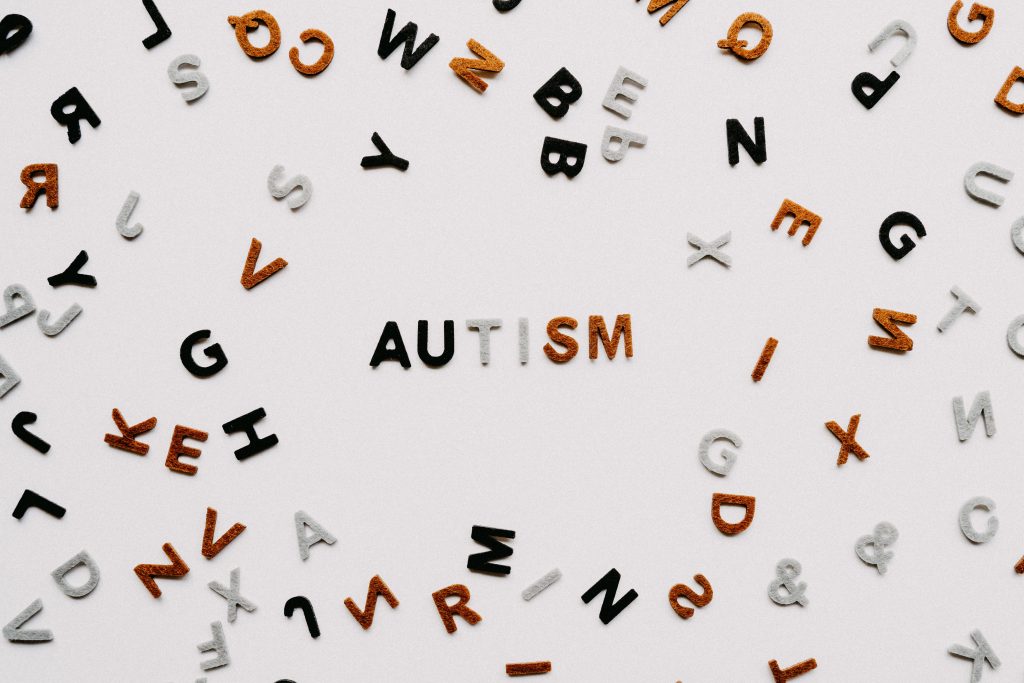The Risky Relationship
Persons affected by addictions (substance use disorder or SUD) often have a co-occurring disorder. Such individuals use alcohol or drugs to cope with their pre-existing condition, one of which is autism.

What is Autism?
Autism spectrum disorder is an ailment related to brain development that impacts how people perceive and socialize. For the person, it causes problems in social interaction and communication. The disorder also includes limited and repetitive patterns of behaviour. The term “spectrum” in autism spectrum disorder refers to the wide range of symptoms and severity.
Autism spectrum disorder includes previously considered separate conditions — autism, Asperger’s syndrome, and childhood disintegrative disorder.
Autism spectrum disorder begins in early childhood and eventually causes problems functioning in social environments – in school and at work and interacting with others. Children often show symptoms of autism within the first year.
According to the National Institute of Mental Health, 3.4 out of every 1,000 children ages 3 to 10 are affected by autism.
Autism is now diagnosed along a spectrum, depending on how effectively the individual can function in society. The lowest autistic patients live their lives locked in their own world, unable to communicate with society. Some may be nonverbal, while others can only communicate basic needs.
As we move along the autism spectrum, some people can function reasonably well in society. They speak effortlessly and may have a high IQ, but even these autistic individuals cannot wholly relate to other people. They may be obsessive about some issues, unable to empathize with others, or cannot find the right words to connect with others. Someone on the high-functioning end of the autism spectrum may appear just like everyone else at first, may go to school or hold a job like normal people, but they never really feel ‘normal’.

Self-Medicating
Children with high-functioning autism spend their entire childhood trying to ‘fit in’. Other children notice that something is a little different about them and may bully or ignore the person. This leaves the autistic child feeling socially isolated. Sometimes they self-medicate with drugs or alcohol, just like many others do. Someone on the autism spectrum may feel that drinking or doing drugs will take their pain away or help them ‘fit in.’

Dangers of Substance Abuse
Substance abuse is dangerous for everyone, but it may be far riskier for someone with autism. Autism Spectrum Disorder (ASD) often affects the skills needed to use drugs and alcohol sensibly and safely. These include social skills, insight, organizing and understanding the appropriate behaviour in a given context. Drugs may also have a different impact on autistic brains, making them riskier for the user. If the parents of autistic suspect their child is abusing drugs or alcohol, they should consult a professional who is well-informed about autism.

SUD Among Undiagnosed Autistic Patients
A study conducted at Massachusetts General Hospital found that one in five teens and young adults who seek treatment for substance abuse exhibit traits characteristic of a previously unrecognized autism spectrum disorder.
They found that among patients with an average age of 18.7 years under treatment at an outpatient substance use disorder (SUD) clinic, 20% had elevated scores on the Social Responsiveness Scale-2 (SRS-2). This scale is a parent- or teacher-reported measure that has proven to be fairly reliable for identifying the presence and severity of social impairment among individuals along the autism spectrum and differentiate autism from other disorders.
The study, published in The American Journal on Addictions, is the first to look at the prevalence of previously undiagnosed autistic traits among teens and young adults with addictions. “Usually, studies of substance use disorder in autism are done in those with an autism diagnosis already,” he says. “We have looked at this question from the other side, asking how many people with substance use disorder have autism,” wrote the lead author James McKowen, of the Addiction Recovery Management Service at MGH and Harvard Medical School.
They found that while there were few differences between those with elevated autistic trait scores and those with lower, the adolescents with higher SRS-2 scores had a nearly eight times higher likelihood of stimulant abuse and a fivefold higher risk for opioid use disorder.
The findings highlight the importance of assessing patients in a SUD treatment setting for autistic traits.
McKowen writes, “For clinicians, the big takeaway point from this study is that we need to get better at screening and certainly training in the presence of autism spectrum disorder, because many clinicians treat substance use disorder but don’t have specialty developmental training, particularly for issues around autism.”
“For parents, the big takeaway is that if you suspect that your child may have an autism spectrum issue or if school personnel have observed that your child may have autistic traits, you should certainly get that assessed, and let your clinicians know whether your child has had a prior diagnosis of ASD,” he says.

Freephone: 0800 140 4044
Local rate: 0300 330 3040



